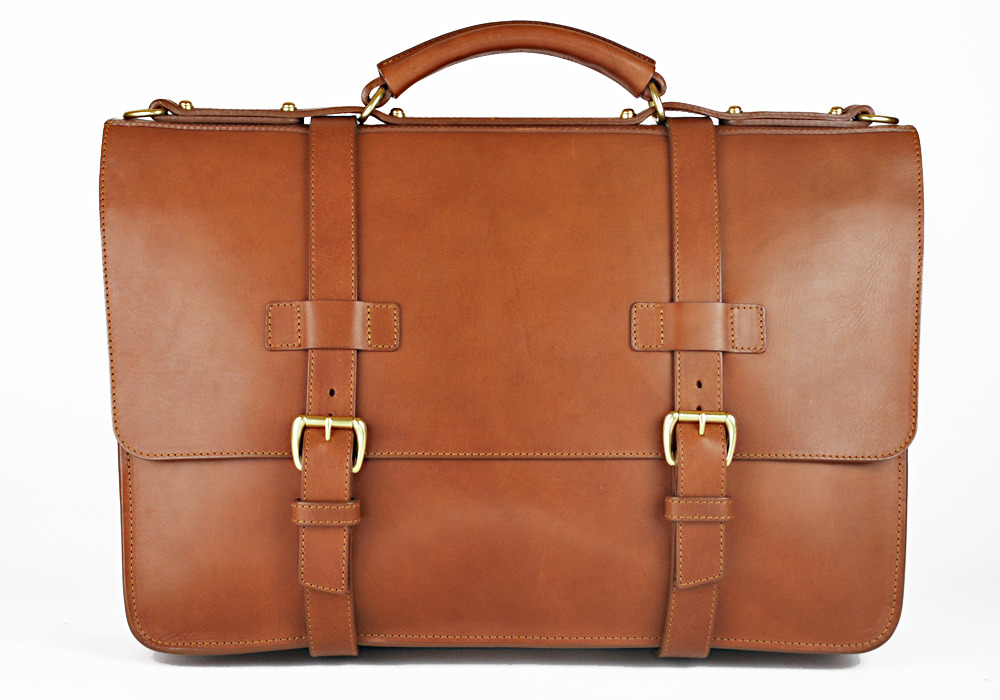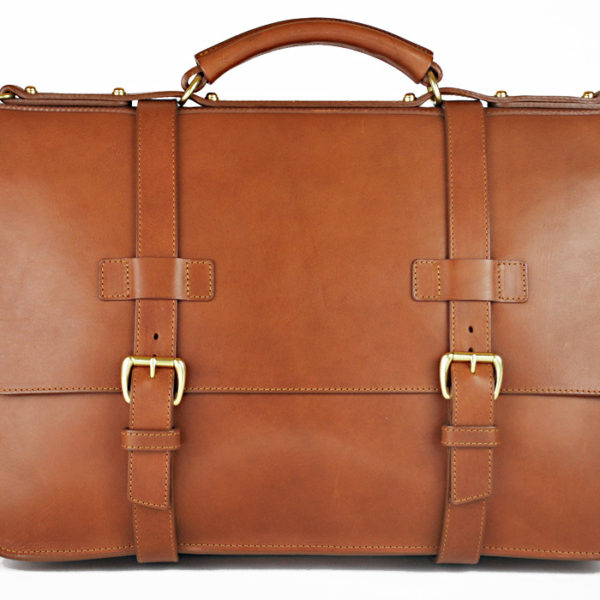
We talked last week about how to judge the quality of leather, but there’s more to leather goods than leather, of course. There’s also the hardware and how everything has been put together. High quality leather will mean little if the brass snaps on your bag break or the lining rips out. So today, we’ll review each in turn, and talk about some things you can look for when shopping around.
Hardware
Any bag or piece of luggage will be made with a variety of hardware. These can include swivel snap hooks, which are commonly used to attach the leather shoulder strap to the bag; tucks, which are used under a buckled strap so the strap does not need to be buckled and unbuckled; and various latches. Any of these can fail if they’re not made well. Frank Clegg, the eponymous owner of Frank Clegg Leatherworks, told me last week that zippers are perhaps the most common point of breakage. “We had a $600-700 leather coat dropped by our workshop just recently,” Frank said. “It had eight different zippers, all of which had the pulls snap off. The zippers had pulls that look similar to the ones we use, but instead of taking a wire loop and casting around it, they cast the loop into the pull. The cast metal just snaps off when it’s that thin.”
Frank suggests that consumers look for something that’s of a good weight. High quality hardware has a thicker look and feel, and the casting seams are usually removed and polished. If the metal has been treated with some kind of finishing, you may also want to examine the quality of the job. Solid brass, for example, can be left natural (which is OK) or polished and then lacquered, and zinc and steel can be plated with brass or nickel. If these lacquering or plating jobs haven’t been done well, the metal can look dull or foggy in a short period of time.
Construction
In addition to the leather and hardware, there’s the matter of how everything has been put together. Much of this depends on the type of product at hand. For example, belts will have their own standards. A high-quality belt will have a leather lining (if the design requires one) instead of the cheap paper stuffing that lower-end manufacturers use. You may also want to examine whether the keeper has been squared off (shaped into a rectangle), and whether the details, such as any beveling, have been done well.
One thing you can look for on all leather goods is the quality of the stitching. Naturally, these should always look neat and straight. You may also want to see if the edges have been left raw or if they’ve been turned. Turned-edge leather is made in a way that’s similar to how the edge of a piece of garment has been finished – the edges are turned underneath and then stitched. This yields a more attractive and durable edge, but of course, whether it can be done depends on the job at hand. Alex Kabbaz of Kabbaz-Kelly & Sons has a good article on this you can read here.
Takeaways
Leather products can be expensive, but if you purchase the right ones, they’ll last decades and only get better with time. Look for fully tanned, full-grain leathers; smooth, durable hardware; and neat stitching. If applicable, also look for edges that have been turned and sewn, rather than left raw. You should examine for these things on the outside as well as the reverse side, inside, or any other parts that don’t normally show. Even if they’re not easily visible, a top-quality maker will make sure that all parts of the product are pleasing and well done, and these are signs that you’re buying something of quality.
(Special thanks to Dave Munson at Saddleback Leather Co. and Frank Clegg at Frank Clegg Leatherworks for their help with this article. Pictured above is one of Frank Clegg’s beautiful briefcases)
